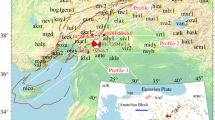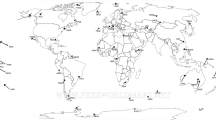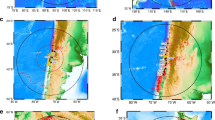Abstract.
The New Hebrides experiment consisted of setting up a pair of DORIS beacons in remote tropical islands in the southwestern Pacific, between 1993 and 1997. Because of orbitography requirements on TOPEX/Poséidon, the beacons were only transmitting to SPOT satellites. Root-mean-square (RMS) scatters at the centimeter level on the latitude and vertical components were achieved, but 2-cm RMS scatters affected the longitude component. Nevertheless, results of relative velocity (123 mm/year N250°) are very consistent with those obtained using the global positioning system (GPS) (126 mm/yr N246°). The co-seismic step (12 mm N60°) related to the Walpole event (M W = 7.7) is consistent with that derived from GPS (10 mm N30°) or from the centroid moment tensor (CMT) of the quake (12 mm N000°).
Similar content being viewed by others
Author information
Authors and Affiliations
Additional information
Received: 19 November 1999 / Accepted: 17 May 2000
Rights and permissions
About this article
Cite this article
Calmant, S., Valette, JJ., Crétaux, JF. et al. Tectonic plate motion and co-seismic steps surveyed by DORIS field beacons: the New Hebrides experiment. Journal of Geodesy 74, 512–518 (2000). https://doi.org/10.1007/s001900000113
Issue Date:
DOI: https://doi.org/10.1007/s001900000113




